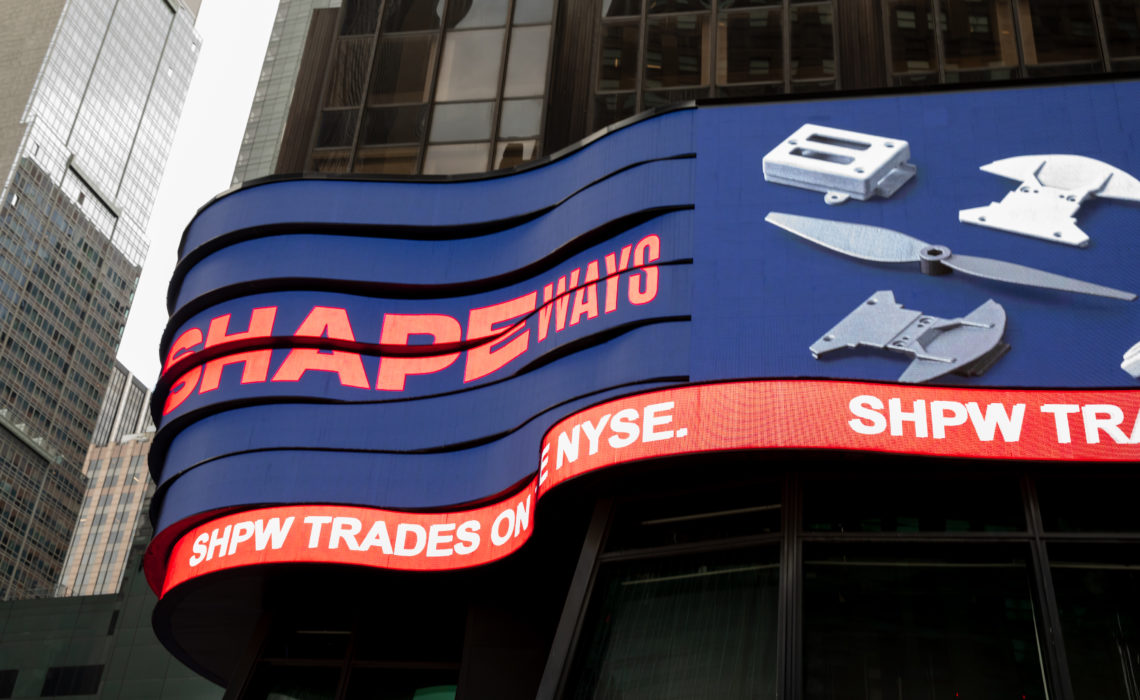
- Digital manufacturing will continue to benefit from on-demand 3D printing capabilities.
- Innovative Software-as-a-Service offerings to facilitate fast, anywhere access.
- Increased options for customization and personalization will drive momentum, especially in medical/healthcare applications.
- Additive manufacturing will alleviate lingering supply chain challenges.
- Investment opportunities will continue to push the market forward and provide opportunity for consolidation.
Each year brings millions of new 3D printed parts for customers at Shapeways, with access to 11 technologies and over 90 different materials and finishes. As a leader in the additive manufacturing (AM) space, Shapeways remains future ready by paying close attention to industry trends, and gaining insight from industry insiders, manufacturing partners, and a continually growing customer base that includes undeniably brilliant innovators and high-profile businesses.
This year’s predictions were further strengthened with statistics gathered from the recent State of 3D Printing survey by Shapeways. This data shows that ongoing changes in customer expectations include a need for better quality, sustainable solutions, and the ability to make more design changes and add customization.
With all of that in mind, let’s explore the annual predictions from Shapeways for the 3D printing industry in 2022a bit more:
3D printing will continue to disrupt and improve the manufacturing industry
As digital manufacturing advances, traditional companies will continue to accentuate their technology lineup with new offerings, while others will profoundly transform their workflow with 3D printing. Interest in AM processes is expected to trend upward throughout 2022 and far beyond as manufacturers of all sizes improve production and expand their customer bases. This also includes a shift as they look for ways to simplify workflow while increasing revenue too, resulting in higher demand for customized, low-volume production runs.
Software like Otto accelerates integration of 3D printing
It would be challenging to find a company that doesn’t rely on software to run at least part of their business. The time has come for this to include 3D printing ordering and production too–supporting a wide range of businesses who may be successful but are having trouble keeping up with customer demand due to a greater need for efficiency from the design phase to delivery; after all, just deciding on and giving out quotes for a wide scope of projects can be extremely time-consuming. Innovative Software-as-a-Service offerings providing functions like instant quotes and printability analysis save untold hours of labor, and enhance the customer experience.
Shapeways’ recent Otto software announcement gives manufacturers a way to gain free access to 3D printing by automating processes while validating quality end to end. While 3D printing now is mainstream among 75% of the mid-sized manufacturers polled in the State of 3D Printing survey, more flexibility is still needed to meet demands for quality, personalization and sustainability.
3D Printing to further patient-specific treatment in medical applications
The ability to create new parts, keep a digital inventory of replacement parts, and even bring obscure parts back to life spans critical applications for automotive, railway, and aerospace applications. For the medical industry however, 3D printing is uniquely important as it offers incredible avenues for enhancing the quality of life for humans, as well as saving lives too. This has been proven with a variety of customized medical devices, prosthetics, and robotic arms. Companies like Armor Bionics partner with Shapeways for 3D printing incredibly complex medical models that act as guides for surgeons providing delicate procedures, improving outcomes for patients around the world.
Recent data shows that the 3D printing market is expected to grow from an already impressive $2.4 billion in 2021 to $5.1 billion by 2026. Expect to see ongoing advancements with 3D printed items that include:
- Surgical guides
- Surgical instruments
- Customized implants
- Wearable devices
- Prosthetics
On-demand 3D printing is the cure to supply chain issues
One great byproduct of 3D printing is the ability to circumvent supply chain issues. Highly customized products will increasingly be manufactured as needed and delivered locally. This is one of the most valuable–and disruptive–aspects of 3D printing, meaning that spare parts don’t need to sit gathering dust in warehouses when businesses have a digital inventory of everything they need on file. Products can be made and sent to market much more expediently too.
Investors and manufacturing partners create solid foundation for the industry
The State of 3D Printing survey cited statistics showing that 68% of industry executives agree 3D printing is indeed the future of manufacturing. This line of thinking has been bolstered in 2021 with the Shapeways SPAC merger in late September, a host of IPOs, and progressive new partnerships. Shapeways also announced a partnership with Desktop Metal, ensuring even greater access to advanced materials and technology.
In 2022, the level of interest should continue rising as well-known names in the manufacturing and consumer goods industries scale strategically, streamlining workflow and production of quality 3D printed parts with powerful new technology and software.
About Shapeways
Contact Shapeways now to enjoy the benefits of advanced technology and materials for manufacturing creations with accuracy, complex detail, and no minimum or limits in terms of mass customization or single part orders. Shapeways has worked with over 1 million customers in 160 countries to make over 21 million parts! Read about case studies, find out more about Shapeways solutions, and get instant quotes here.


